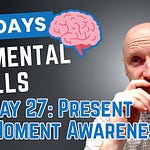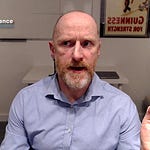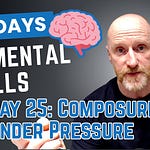SMART goal setting is the gold standard for achievement and success. Michel & Daniels (2002) said that goal-setting is “quite easily the single most dominant theory in the field, with over a thousand articles and reviews published on the topic in a little over 30 years.” In 1990, two researchers published a book that caught the attention of many people in business and management circles. Edwin Locke and Gary Latham developed a theory of goal setting, providing a framework for achieving success. They said that whether we are consciously or unconsciously pursuing our goals, we do so nonetheless, and this goal-directed action shares three common features;
Self-Generation The actions of living organisms are fuelled by a source integral to the organism.
Value Significance All goal-directed behaviour has value significance for the organism in terms of its survival.
Goal Causation Goal attainment is caused by consciousness, the person’s vision, expectation, and imagination for a future state.
Locke and Latham were highly critical of the behaviourist view. Behaviourism stated that your actions are a consequence of environmental contingencies. In other words, your behaviour is a consequence of the promise of reward or the threat of punishment. Instead, Locke and Latham stated that there is causal efficacy of consciousness in goal pursuits. In other words, goal pursuit is caused by consciousness. Goal Setting Theory assumes that human actions are directed by conscious goals and intentions.
The SMART Goal Setting Framework
The SMART framework is derived from Locke & Latham’s work on Goal Setting Theory. Cognitive behavioural therapies, such as Acceptance and Commitment Therapy (ACT) (Hayes et al., 2006), take it a step further, suggesting that setting goals guided by our values is of critical importance. Therefore, before setting any goals, it is essential to clarify the underlying value(s) that drive these objectives. There are different versions of this acronym. In Harris' version, taken from the book The Happiness Trap, SMART stands for:
S - Specific: specify the actions you will take, when and where you will do so, and who or what is involved. Example of a vague or non-specific goal: “I will spend more time with my kids.” A specific goal: “I will take the kids to the climbing wall on Saturday.”
M - Meaningful: The goal should be personally meaningful to you if it is genuinely guided by your values, rather than trying to please others or avoid pain. If it lacks a sense of meaning or purpose, check in and see if it is really guided by your values.
A - Adaptive: Does the goal help you to take your life forward in a direction that, as far as you can predict, is likely to improve the quality of your life and that of others? Is it adaptive?
R - Realistic: The goal should be realistically achievable. Take into account your health, competing demands on your time, financial status, and whether you need to develop new skills to achieve it.
T - Time-bound: To increase the specificity of your goal, set a day, date and time for it. If this is not possible, set as accurate a time limit as you can.
Download the worksheets
What are the benefits of achieving this goal?
What are the potential pitfalls and what will you do if they arise?
Write a commitment statement.
Follow the Russ Harris worksheets here
Mental Skills Basics Course
Suffering stress and anxiety is not a prerequisite for success in self-employment–there's a better way. Mental skills provide you with the means of coping effectively with difficulty and achieving your goals. I created the Mental Skills Basics Course to introduce business leaders, self-employed individuals, freelancers, consultants, and small business owners to the psychological and emotional skills associated with success.










